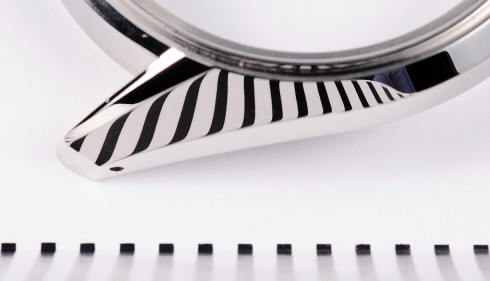Results 11 to 20 of 33
Thread: Vintage Finishes
-
12-13-2015, 05:58 PM #11

A "Burnished Finish!" That is a nifty concept, as if literal, would be affecting the what? The molecular surface of the metal? Let's see, what have I burnished? Got it, years ago I learned to sharpen a wood scraper...the rectangular kind. It started with a filed perpendicular surface then I took a burnishing rod and with main force, drew it along the surface and racked it over to create a hook which would make the most amazingly fine wood shavings and actually kind of polish the wood. I'm sure an actual woodworker could explain this better.
If you polished with rouge on a wooden wheel it seems that you would have to mind the grinding lines. I wonder if that would make any difference?"Call me Ishmael"
CUTS LANE WOOL HAIR LIKE A Saus-AGE!
-
12-13-2015, 06:16 PM #12

"Plus, let's not forget that polishing was the last task performed and it was done by the apprentices. IE, children. Admittedly children who'd been starved and beaten until they got it right, but children all the same."
Voidmonster
I'm calling for the reinstatement of the Sheffield finish and for yanking some children away from their electronic screens. I'll bet they would end up enjoying the hardship. Maybe just start with summer apprenticeships."Call me Ishmael"
CUTS LANE WOOL HAIR LIKE A Saus-AGE!
-
12-13-2015, 06:17 PM #13Senior Member



- Join Date
- Apr 2012
- Location
- Diamond Bar, CA
- Posts
- 6,553
Thanked: 3215
It was call a “Black Finish or Polish” because at some angles the reflection was deep and black. There are a group of young guys in Sheffield that have access to some of the old guys that were kids that did the polishing and more importantly the making of the wheels. There are links to some of them who post on British Blades. They do have some very nice bright finishes mostly on knives.
Some say to replicate the finish, each step of the process must be followed, including the Seal or Walrus skinned wheel.
I recently spoke with an old cutlery shop owner, who told me he was using a similar process with hard felt wheel and glued on red rouge, Ferrous Oxide, but even he admitted it was not the same finish. More importantly it seems no one knows what exactly was in the “Red Rogue” as it could have been a special blend or grind.
-
The Following User Says Thank You to Euclid440 For This Useful Post:
WW243 (12-13-2015)
-
12-13-2015, 06:18 PM #14
-
12-13-2015, 06:24 PM #15
-
12-13-2015, 06:24 PM #16

Seiko uses a process called Zaratsu to finish the cases on their high end watches that results in superior mirror finishes. As I understand it they use a tin plate that spins at a very high rate and by using differing angles can get a finish without distortion under high mag that is really superior.
No matter how many men you kill you can't kill your successor-Emperor Nero
-
The Following User Says Thank You to thebigspendur For This Useful Post:
WW243 (12-13-2015)
-
12-13-2015, 06:32 PM #17

The Navy had rum. The Little M'esters had week-old oat cakes and janky meat.
-Zak Jarvis. Writer. Artist. Bon vivant.
-
12-13-2015, 06:33 PM #18
-
12-13-2015, 06:40 PM #19

From the GS website:
"Every surface of each case and bracelet is polished by the experienced craftsmen. The mirror finish on the case side surface has no distortion. The process is known as Zaratsu or blade polishing and is made by carefully applying a rotating tin plate against the case at a very precise angle. This process is entrusted to only the most skillful and experienced craftsmen."
basically, it's tin polishing for the case. The same procedure (polishing steel on tin plates with ultra fine diamond paste) is done by brands like Glashutte Original for their swan necks and other brands for steel components to attain what is known as black polishing, where the surface is so highly polished it looks black from certain angles. This is why the GS case is unmatched in my humble opinion.
 "Call me Ishmael"
"Call me Ishmael"
CUTS LANE WOOL HAIR LIKE A Saus-AGE!
-
12-13-2015, 06:44 PM #20


 115Likes
115Likes LinkBack URL
LinkBack URL About LinkBacks
About LinkBacks






 Reply With Quote
Reply With Quote

